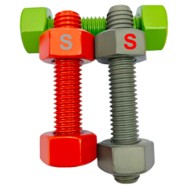
Navigating dress figures might appear as a confidential mystery
- Recognising your body outline is the essential first action
- Collect correct chest, waist and hip data to confirm fit
- Study the supplier's measurement guide for precision
Eschew exclusive use of tag sizes because they can misguide Better to use personal dimensions to consult the guide. Discovering wardrobe identity is an individual experiment.
Exposing the method behind fit tables
Inconsistent fit systems lead to common buying confusion. Interpreting measurement charts sometimes resembles a tough puzzle, because sizing norms change between suppliers. Nevertheless, learning a few rules will let you master size charts.
- To start, recognise that US, UK, EU and Asian scales differ. Often these include US, UK, European and Asian formats.
- Then, compare the specific figures for chest, waist, hips and length. Crosscheck the chart numbers with your personal figures.
- Ultimately, consult the brand guide for recommended adjustments. Labels sometimes provide clarifications, tailoring tips and advice.
Pinpointing perfect sizing during purchase
The world of fit charts frequently presents challenges. A medium in one label might read as a small in another. These differences usually come from unique size tables each maker uses. Consequently first take careful measurements of your body. Grab a tape measure to ascertain chest, waist and hip sizes. Abstain from assuming the same label across items will fit. Fit can shift by design so same-size items may differ. Uncovering the correct size can mean sampling several styles.

Deciding on stock sizes or personalised fitting
When sizing applies to items like furniture or fittings you must choose. Each route comes with advantages and trade-offs. Off-the-shelf dimensions give speed and typically lower fees. Custom solutions match specific design or space-related requirements
- Gauge your priorities and budget to guide the decision
- Collect precise size data whether for room or clothing
- Research makers and options thoroughly before purchase
In the end the right dimension relies on your individual case.
Tackling the complexities of global size translation
Migrating across regional and maker size charts may perplex buyers. Luckily useful conversion charts and guides exist to assist. Start out by mapping basic garment and shoe measurement standards. Reference conversion tables for matching sizes across regions. Consider that personal body contours determine how sizes fit. Don't hesitate to read reviews and size notes before buying.
A straightforward approach to understanding sizes
Dealing with apparel charts commonly confuses people. Designers commonly adopt independent measurement schemes, yet this resource aims to simplify the process with clear steps.
- First, use a tailor's tape to record your body dimensions
- Thereafter, confirm your dimensions with the provided size map
- Mind your silhouette because it changes fit expectations
Finally, sampling clothing in person assures the truest fit feedback.
A thorough overview of standard men's and women's sizes
Size confusion intensifies for online shoppers without fitting rooms. Therefore here is a consolidated guide to both male and female sizing. In buying pants, shirts or dresses these tips clarify the right size.
- Primarily, be aware sizing shifts between labels and territories
- Second, pay attention to waist, hips, bust and shoulder measurements
- Ultimately, pick the higher size when caught between measures
Applying these steps equips you to handle sizing charts confidently. Enjoy your shopping experience!

A parent's guide to determining children's sizes
Determining youngsters' sizes often proves tricky. Rapid child growth causes frequent size changes. Depend on the producer's chart rather than age indications. Obtain chest, waist and height data to match the size chartA guide to precise bust, waist and hip measurement
To make clothes fit properly you must measure your body accurately. Use a pliable tape and friend for accurate circumference readings. Position yourself upright, shoulders at ease and feet apart
How size ranges from XS to XXL translate
Fashion sizing now presents a complicated landscape. Across brands inconsistency in sizing frequently occurs. A careful examination of size bands will aid understanding. Now we reveal how letters and numbers correspond to measurements!
Celebrating body size inclusivity

Supporting size inclusion combats restrictive ideals. It calls for dismantling messages that promote narrow sizing norms. Let us develop norms that champion acceptance and self-esteem.
- Choose body positivity and self-acceptance every day Select habits that promote acceptance and healthy self-view Make a habit of embracing body positivity in everyday life Make a Standard Size habit of embracing body positivity in everyday life
- Never forget that charm comes in many silhouettes and scales
- Interrogate content that upholds unrealistic body expectations
- Make a habit of embracing body positivity in everyday life
